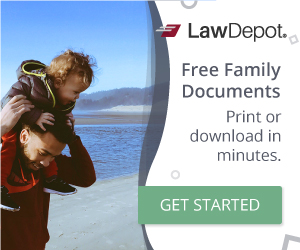Are you in need of a lease agreement for your rental property but don’t want to spend a fortune on legal fees? Look no further! In this article, we will discuss the importance of a lease agreement, where to find free templates (if you don’t have time to read, I recommend this template: CLICK), how to choose the right one, and what key components to include. So, let’s dive in!
What is a lease agreement?
Definition of a lease agreement
A lease agreement, also known as a rental agreement or tenancy agreement, is a legally binding contract between a landlord and tenant that outlines the terms and conditions of the rental arrangement. It establishes the rights and responsibilities of both parties, providing a clear understanding of what is expected throughout the lease term.
Importance of a lease agreement
A lease agreement is crucial for both landlords and tenants. For landlords, it protects their property and helps ensure regular rental income. It also sets the ground rules for the tenancy, addressing topics such as rent payment, maintenance responsibilities, and property access. Tenants benefit from a lease agreement as it guarantees their rights, outlines the lease term, and provides clarity on issues such as security deposits and lease termination.
Key elements of a lease agreement
A well-drafted lease agreement should include several key components to protect the interests of both parties. These elements typically consist of:
- Terms and conditions: This section outlines the rules and regulations that govern the tenancy, including pet policies, noise restrictions, and any specific provisions relating to the property.
- Lease duration and renewal options: It specifies the length of the lease term, whether it’s a fixed-term lease or a month-to-month agreement. It should also include information on lease renewal options if applicable.
- Rent amount, due dates, and late fees: This part details the monthly rent, the date it is due, and the consequences for late payments. It may also include information on how to pay rent, acceptable payment methods, and any penalties for non-payment.
Where can I find free lease agreement templates?
Online sources for free lease agreement templates
Thanks to the internet, finding free lease agreement templates has never been easier . Numerous websites offer a wide selection of templates that you can download and customize to suit your specific needs. Some popular online sources for free templates include legal websites, real estate platforms, and document sharing platforms.
Government websites offering free lease agreement templates
Government websites are another excellent resource for free lease agreement templates. Many local and state government websites provide templates and information regarding landlord-tenant laws and regulations. These templates are often designed to adhere to local laws, ensuring the agreement is legally sound and enforceable.
Real estate organizations providing free lease agreement templates
Various real estate organizations, such as Realtor associations and property management companies, offer free lease agreement templates on their websites. These templates are often professionally drafted and tailored to meet industry standards, providing you with a reliable and comprehensive document.
How to choose the right lease agreement template?
Considerations when selecting a lease agreement template
When choosing a lease agreement template, several factors should be taken into consideration. First, ensure that the template complies with the legal requirements of your jurisdiction. Familiarize yourself with local landlord-tenant laws to ensure the template includes all necessary provisions.
Second, consider the specific needs of your property and tenancy. If you’re renting out a residential apartment, look for a template that addresses common residential lease issues. If you’re leasing commercial space, find a template designed for commercial leases.
Lastly, evaluate the template’s clarity and comprehensiveness. It should be easy to understand and cover all essential aspects of the tenancy, leaving no room for confusion or disputes.
Customizing a lease agreement template to suit your needs
Once you’ve found a suitable lease agreement template, you may need to customize it to reflect your unique circumstances. Personalize the template by inserting the names of the landlord and tenant, property address, and any additional terms or conditions specific to your rental arrangement.
However, exercise caution when modifying the template. Avoid removing or altering any vital provisions that ensure the agreement’s legality and enforceability. If in doubt, consult a legal professional to review your modifications.
Examples of popular lease agreement templates
There is a wide variety of popular lease agreement templates available, catering to different rental situations. Some noteworthy examples include:
- Standard Residential Lease Agreement: This template is designed for general residential rentals and covers essential aspects such as rent payment, maintenance, and lease term.
- Month-to-Month Lease Agreement: This template allows for more flexibility as it does not bind the tenant to a fixed-term lease. It typically requires a one-month notice for termination.
- Commercial Lease Agreement: Tailored for commercial properties, this template addresses specific concerns of commercial landlords and tenants, such as permitted uses and maintenance responsibilities.
What are the key components of a lease agreement?
Terms and conditions
The terms and conditions section of a lease agreement outlines the rules and regulations that both the landlord and tenant must abide by during the tenancy. It covers a wide range of topics, including noise restrictions, pet policies, smoking regulations, and any other provisions specific to the property and tenancy.
Lease duration and renewal options
This part of the lease agreement specifies the length of the lease term, whether it’s a fixed period (e.g., one year) or a month-to-month agreement. It also includes information on lease renewal options if applicable, such as the process and notice required from both parties.
Rent amount, due dates, and late fees
One of the most critical components of a lease agreement is the rent section. It outlines the monthly rent amount, the date it is due, and the consequences for late payments. This section may also include information on acceptable payment methods, penalties for non-payment, and any grace period granted by the landlord.
What should tenants and landlords know about lease agreements?
Rights and responsibilities of tenants
Tenants should familiarize themselves with their rights and responsibilities as outlined in the lease agreement. This includes adhering to property rules, paying rent on time, maintaining the premises, and reporting any maintenance issues promptly. Understanding their rights will help tenants protect themselves from unfair practices and ensure a smooth tenancy.
Rights and responsibilities of landlords
Landlords, too, have specific rights and responsibilities as stipulated in the lease agreement. This includes providing habitable living conditions, responding to maintenance requests in a timely manner, respecting tenants’ privacy, and returning security deposits according to the agreed terms. Complying with these responsibilities will help landlords maintain a positive landlord-tenant relationship and avoid legal disputes.
Legal implications of a lease agreement
A lease agreement is a legally binding contract, meaning that both parties are legally obligated to fulfill their responsibilities stated in the agreement. Violating the terms of the lease can have serious legal consequences, such as eviction for tenants and potential legal action for landlords.
Therefore, it’s crucial for both tenants and landlords to thoroughly review the lease agreement before signing and seek legal advice if needed. Understanding the legal implications will help protect the rights and interests of both parties and ensure a fair and harmonious landlord-tenant relationship.
In conclusion, finding a free rental or lease agreement template is easier than ever thanks to various online sources, government websites, and real estate organizations. Selecting the right template requires considering legal requirements, customizing it to suit your needs, and understanding its key components. By having a well-drafted lease agreement, both landlords and tenants can protect their interests, set clear expectations, and promote a healthy and lawful tenancy.



